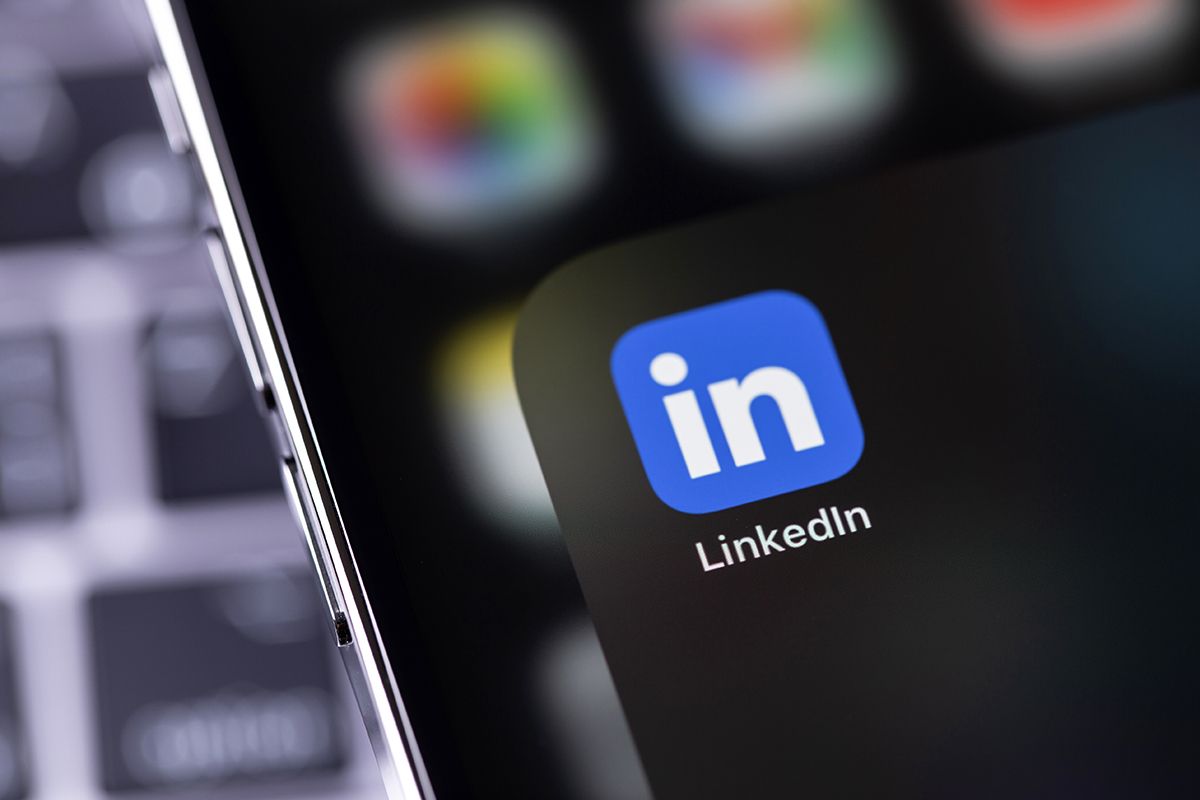How to Use LinkedIn Effectively: Tips from a Headhunter

LinkedIn has become the go-to platform for professionals looking to build their careers, expand their networks, and attract new job opportunities. From a headhunter’s perspective, it is also a critical resource for identifying top talent, assessing candidates’ profiles, and reaching out to potential hires. For businesses and individuals alike, optimising LinkedIn can significantly impact the quality of connections, career prospects, and overall professional branding.
In this guide, here at
Wyman Bain we will share insider tips on how to use LinkedIn effectively, offering advice from a headhunter’s point of view. Whether you’re seeking new career opportunities or looking to strengthen your professional presence, these strategies can help you stand out on the platform.
1. Optimise Your LinkedIn Profile for Visibility and Impact
Your LinkedIn profile is your professional introduction, often seen before any formal interaction takes place. It's essential to present a polished, optimised, and compelling profile that immediately resonates with recruiters and potential business connections.
Craft a Strong Headline
Your headline is the first impression most viewers will get. Instead of simply listing a job title, it should clearly communicate your expertise, value, and key skills. It is also one of the most important factors in LinkedIn’s search algorithm, so it’s essential to include relevant keywords.
For instance, rather than saying:
- “Marketing Manager at XYZ Company” (generic), opt for:
- “Marketing Manager | Expertise in Digital Strategy, SEO & Brand Development” (specific and keyword-rich).
This approach not only showcases your role but also highlights the skills that make you unique.
Write a Compelling Summary
The LinkedIn summary should tell your professional story in a way that showcases both your personality and achievements. This is the space to go beyond your resume and explain what drives you, what you've accomplished, and what you’re aiming for next.
A well-crafted summary should:
- Use storytelling to describe your career journey and aspirations.
- Highlight measurable achievements (e.g., “Increased web traffic by 50% through targeted campaigns”).
- Include a call to action, encouraging readers to connect or reach out for potential opportunities.
Keep it concise, around 200-300 words, and ensure it speaks to the value you bring to the table.
Use Professional Imagery
First impressions matter, and having a professional, high-quality headshot can dramatically increase engagement with your profile. Profiles with professional photos receive more views and connection requests.
Additionally, using a custom LinkedIn banner image that reflects your professional identity—whether through branding, industry-related visuals, or clean design—can help your profile stand out visually.
2. Leverage Keywords for Enhanced Recruiter Searches
Keywords are essential for getting noticed by recruiters. As headhunters, we often search for candidates using specific terms and skills relevant to the roles we are trying to fill. Optimising your profile with industry-specific and role-specific keywords ensures that you are visible when recruiters are searching for talent.
Where to Place Keywords
Keywords should be naturally incorporated throughout your profile, especially in:
- Your headline: Focus on job titles, industry-specific terms, and your core expertise.
- The summary: Blend keywords into the narrative of your career journey.
- Job descriptions: Highlight accomplishments and skills that align with the positions you’re targeting.
For instance, if you are in IT, keywords like “Cloud Computing,” “DevOps,” “Agile Methodologies,” and “AWS” might make your profile more searchable for relevant roles.
Analyse Job Listings for Inspiration
One way to ensure you are using the right keywords is to analyse job descriptions of the roles you are interested in. Look for common phrases, skills, and tools mentioned frequently and consider incorporating them into your profile, as long as they align with your experience.
3. Build and Cultivate a Targeted Network
LinkedIn is built on connections, but it’s not about amassing as many contacts as possible. A strategic approach to networking—one that focuses on relevance and mutual value—can yield much more success in the long term.
Make Thoughtful Connection Requests
When sending connection requests, especially to people you don’t know personally, it’s important to personalise the message. A tailored message increases the likelihood of acceptance and sets the foundation for a meaningful relationship.
For example:
- “Hi [Name], I came across your profile while researching leaders in [industry]. I admire your work in [specific area] and would love to connect and learn more about your insights.”
Personalised outreach signals genuine interest and can open doors to further collaboration or conversations.
Engage Consistently with Your Network
Once you’ve connected with professionals, it’s crucial to maintain active engagement. This can be achieved by:
- Commenting on posts or sharing relevant insights.
- Liking or congratulating connections on their achievements.
- Sharing industry-related content or your own thoughts on recent trends.
Building a vibrant network requires consistent interaction and value exchange. Engagement not only keeps you on the radar of your connections but also boosts your profile’s visibility in LinkedIn’s algorithm.
4. Join and Actively Participate in LinkedIn Groups
LinkedIn groups offer a tremendous opportunity to engage with professionals in your industry, learn from peers, and even catch the eye of recruiters who frequent these groups. Participating in group discussions allows you to demonstrate your expertise and build relationships with others in your field.
Select Industry-Relevant Groups
Focus on joining groups that are active and cater to your profession or industry. Groups related to your niche offer a space to share insights, ask questions, and interact with peers.
Contribute Meaningfully
Rather than simply being a passive member, participate in group discussions by sharing valuable insights, answering questions, or starting relevant conversations. This positions you as an expert and increases your visibility to group members, including potential employers and recruiters.
5. Highlight Your Skills and Seek Endorsements
Keep Your Skills Section Current
LinkedIn allows users to list skills, and these are often used by headhunters to filter candidates during a search. Regularly update this section with skills that are not only relevant to your current role but also align with where you want to take your career.
Encourage Endorsements
Endorsements for your skills serve as social proof that you are proficient in the areas you claim. Reach out to colleagues or industry peers to endorse your skills, especially those most relevant to your desired career path. You can initiate this process by endorsing their skills, which often leads them to reciprocate.
6. Use LinkedIn’s Job Search Tools Wisely
For job seekers, LinkedIn provides a variety of tools to help streamline the search process and attract recruiters.
Activate Job Alerts
Setting up job alerts ensures you are notified immediately when new positions matching your criteria are posted. This gives you the advantage of being among the first to apply.
Use the “Open to Work” Feature
The “Open to Work” feature allows you to signal to recruiters that you’re open to new opportunities, without necessarily broadcasting it to your current employer. Tailor this setting to include your preferred job titles, locations, and employment types (e.g., remote, contract, full-time), making it easier for recruiters to match you to the right opportunities.
7. Request Professional Recommendations
Recommendations are a powerful tool on LinkedIn, acting as testimonials from people who have worked with you. Recruiters pay close attention to recommendations because they offer a third-party validation of your skills and work ethic.
Request Recommendations Thoughtfully
When asking for a recommendation, choose individuals who can speak to specific projects or skills. A personalised request works best. Offer to provide a recommendation in return, which helps maintain the professional relationship.
For example:
- “Hi [Name], I was hoping you could write a brief recommendation based on our work together on [specific project]. I’d be happy to provide a recommendation for you as well!”
Balance Your Recommendations
Aim to have a balanced set of recommendations from managers, colleagues, and clients. This diversity gives recruiters a well-rounded view of your abilities.
8. Post and Engage with Content
Being active on LinkedIn by sharing content and engaging with posts can enhance your professional brand. LinkedIn’s algorithm rewards users who are consistently active, and your interactions can bring your profile to the attention of a wider audience, including recruiters.
Share Original Content
Posting original content, such as industry insights, thought leadership articles, or case studies, establishes you as an expert in your field. Regularly sharing valuable content increases your visibility and credibility.
Interact with Other Posts
Engaging with other users’ posts by liking, sharing, or commenting also boosts your visibility. The more active you are, the more your profile will appear in the feeds of your connections and their networks.
LinkedIn has become a vital platform for professionals and businesses alike, offering unparalleled opportunities for networking, job searching, and personal branding. By optimising your profile, engaging thoughtfully with your network, and leveraging LinkedIn’s many features, you can significantly enhance your visibility and appeal to recruiters. Following these tips from headhunters can help you not only navigate the platform more effectively but also open doors to new opportunities and career growth.
For more advice, contact us at
Wyman Bain today!



